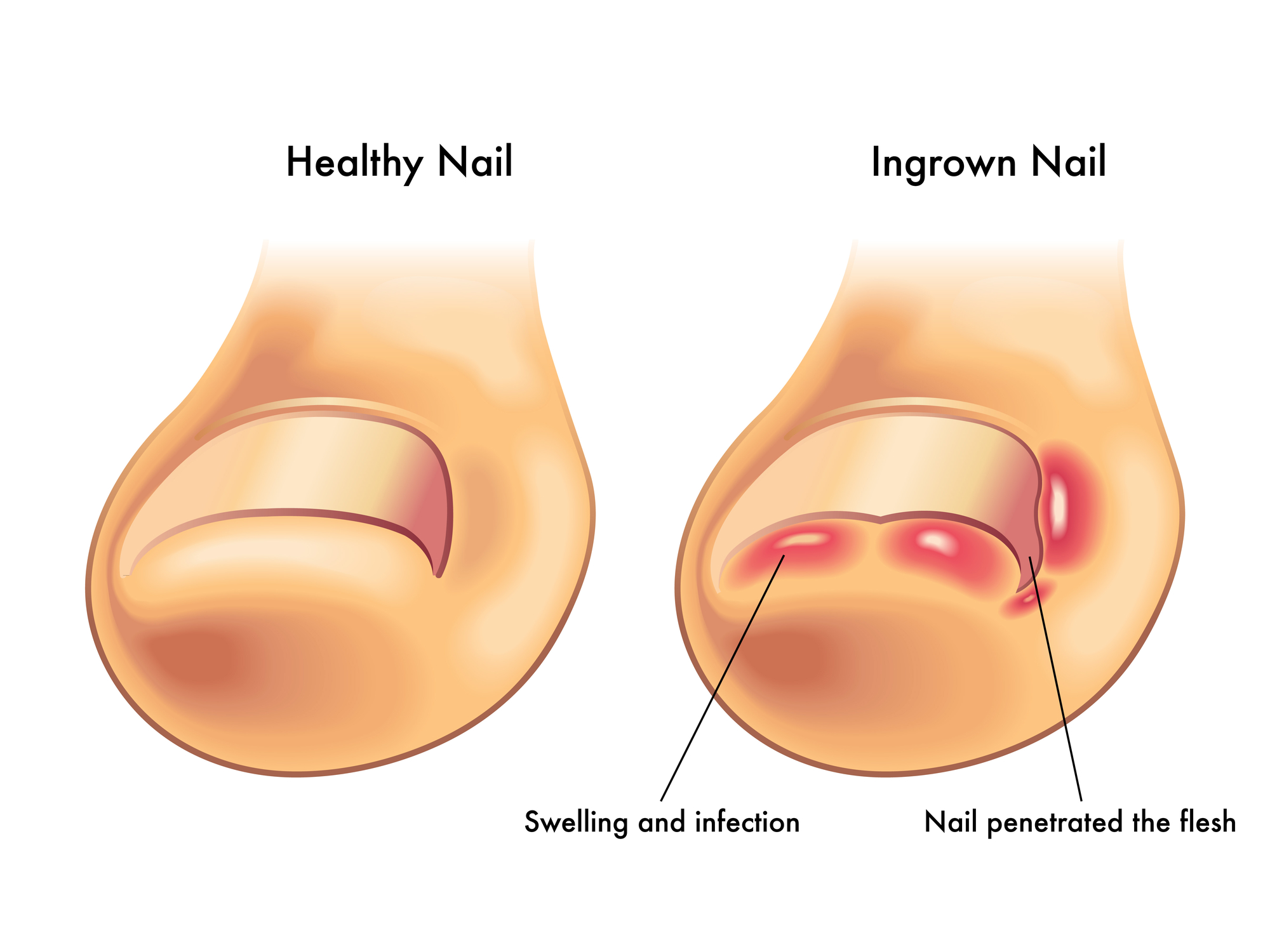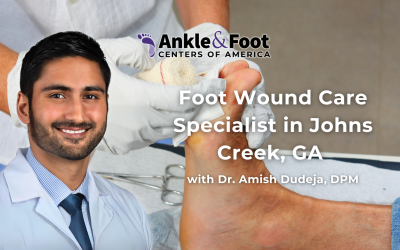Ingrown toenails are one of the most common ailments seen in my office. An ingrown toenail occurs when the corner or side of a nail presses against the adjacent skin causing pain, redness, swelling, and sometimes infection. The great toe is the most common toe affected, however it is possible to get an ingrown toenail on any of your toes. There are multiple causes of ingrown toenails. Some causes include: wearing tight shoe gear, from a traumatic event to the toenail, and some people are genetically predisposed to getting ingrown toenails because of the shape of their toenail.
There are several methods used to prevent ingrown toenails. Make sure to allow your toenail to grow to the tip of the toe and be sure to clip straight across. Clipping the nail too short often leads to ingrown toenails. Also, when you notice the first signs of discomfort from an ingrown toenail, try placing a small amount of cotton fiber from a cotton ball or q-tip in between the nail plate and tender skin. Doing this for several days in a row often helps resolve what could have become an ingrown toenail. Wearing proper fitting shoe gear with plenty of space in the toe box, especially during periods of high activity is paramount to preventing ingrown toenails. For patients with very thick toenails that press against the skin causing discomfort, application of Vick’s Vapor rub or the generic equivalent once or twice daily to the toenails will soften the toenail making the ingrown symptoms more tolerable. As an added benefit, the menthol in the Vick’s Vapor rub will also kill any exposed nail fungus helping prevent the spread of nail fungus to other toenails.
If these preventative methods fail to resolve your symptoms, be sure to see a podiatrist. A podiatrist is highly trained at treating toenail pathology and would best be suited to assist you. Patients with diabetes or poor circulation need to see a podiatrist immediately if any symptoms of an ingrown are felt as these patients are vulnerable to dangerous infections, which can be limb or life threatening if untreated. Patients with diabetes often develop a condition known as peripheral neuropathy caused by the poor control of blood glucose associated with diabetes. Peripheral neuropathy is a lack of the ability to perceive light touch or pain in certain parts of the feet. These patients need to inspect their feet daily for signs of infection from ingrown toenails as these can often go unnoticed by patients due to their numbness. Patients with known infection in caused by an ingrown toenail need to be treated immediately.
Podiatrists have several treatment options in their toolkit for resolving ingrown toenails. Most nail procedures may be performed in clinic under local anesthesia with Lidocaine or Marcaine. During the procedure, the podiatrist usually only needs to cut the nail and is able to free it from its attachment at the base of the nail. If necessary, the podiatrist can prescribe antibiotics to treat any infection. For patients who have recurrent ingrown toenails, a safe effective option is called a partial matricectomy. This involves the patient under local anesthesia having the offending portion of toenail removed (usually only 2 millimeters in width) and then a chemical called phenol is applied to the nail root (also known as the nail matrix). The patient goes home with a bandage on his toe, and then is able to resume normal activity within 24 hours. Ingrown toenails are safely and effectively treated in the outpatient clinic setting. For the patient who needs more aggressive treatment, there are a variety of surgical treatment options that are effective as well.
To learn more about Ingrown Toenails and other forms of nail conditions, please contact Ankle & Foot Centers of America by dialing 470-274-7763 or Contact Us.
Dr. Lewis is currently accepting new patients and accepts most insurance plans. He practices at the Canton & Woodstock Locations.





